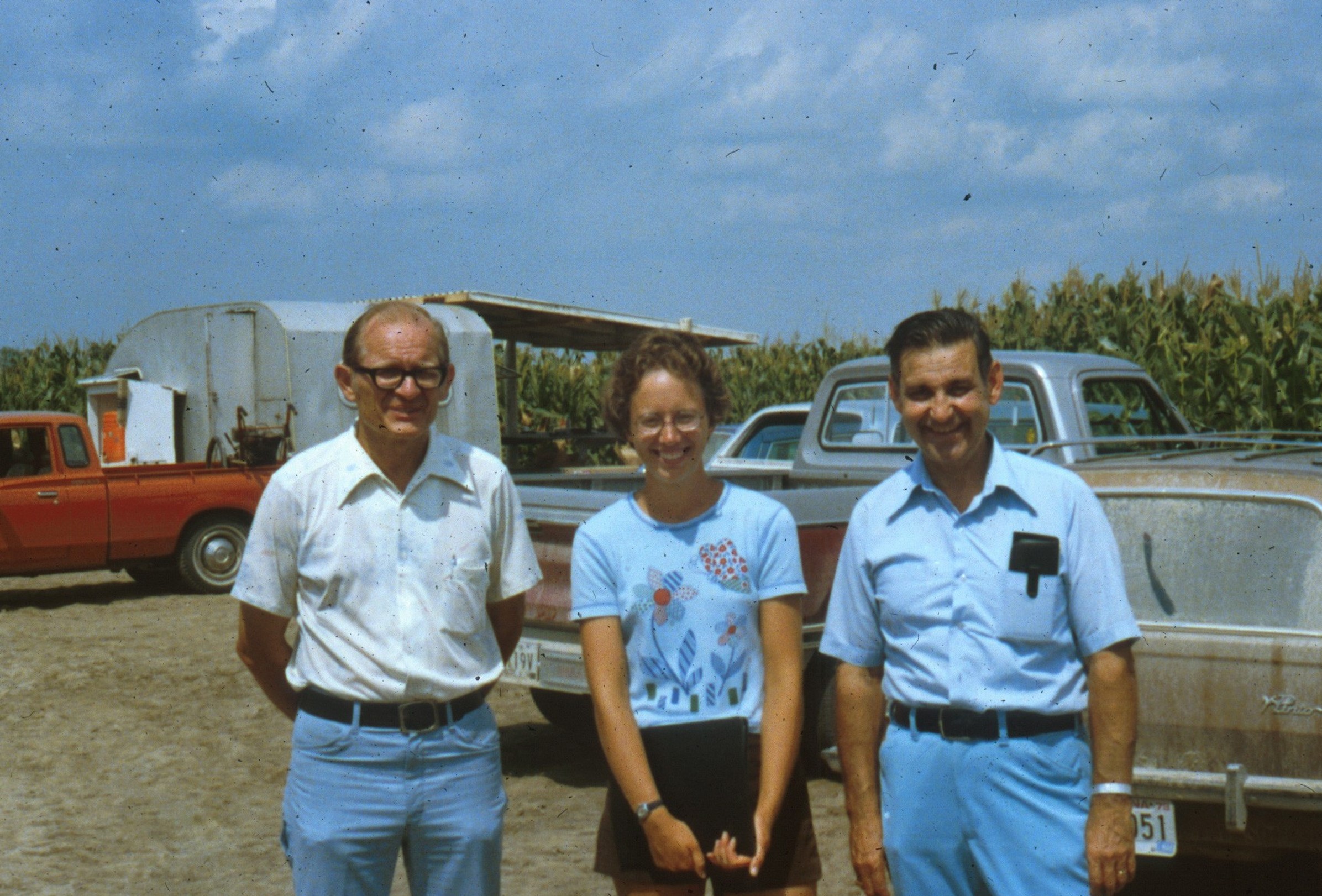Legends of Agronomy
The Legends of Agronomy Award is intended to honor individuals who have made a major contribution to the establishment, development, enhancement, and/or improvement of the Agronomy Department. These individuals may have been faculty, administrators, alumni, or anyone else associated with the Department. It is expected that the individual has made an impact on the department either through service, administration, development of programs, or sustained activities that contributed to the success and reputation of the Agronomy Department.
The Legends of Agronomy Award inducted members in 2007 and again in 2012, but the honor has been on hiatus ever since. In conjunction with ACRE 75 - the celebration of 75 years of the Farm - the Department of Agronomy will once again be selecting individuals to be awarded as Legends of Agronomy.
Legends of Agronomy Nomination Form
Previous Legends:
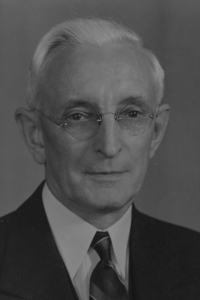
Alfred T. Wiancko
Wiancko was Agronomy's first department head. He led growth in faculty, research, and enrollment as Agronomy department head for 35 years.
Committed to Crops, Soils Research
Raised on a Canadian farm, Agronomy Legend Alfred Wiancko devoted 40 years of his life to teaching, research and leadership at Purdue University and the agriculture industry.
Coming to Purdue in 1903, he first taught crops and soils courses. He also was committed to research, much of it centered at the 10-acre University Farm. He also worked with farmers on cooperative tests, establishing 11 field test sites around the state, and he was instrumental in developing soybeans as a Midwestern crop.
He frequently judged local and state grain shows, and was Indiana’s representative to the International Grain and Hay Show many times. In all, he wrote or co-authored some 67 different publications.
As department head for 35 years, Wiancko led growth in faculty, research and enrollment. He was a member of the Indiana Academy of Science and International Society of Soil Science and elected a fellow in the American Society of Agronomy.
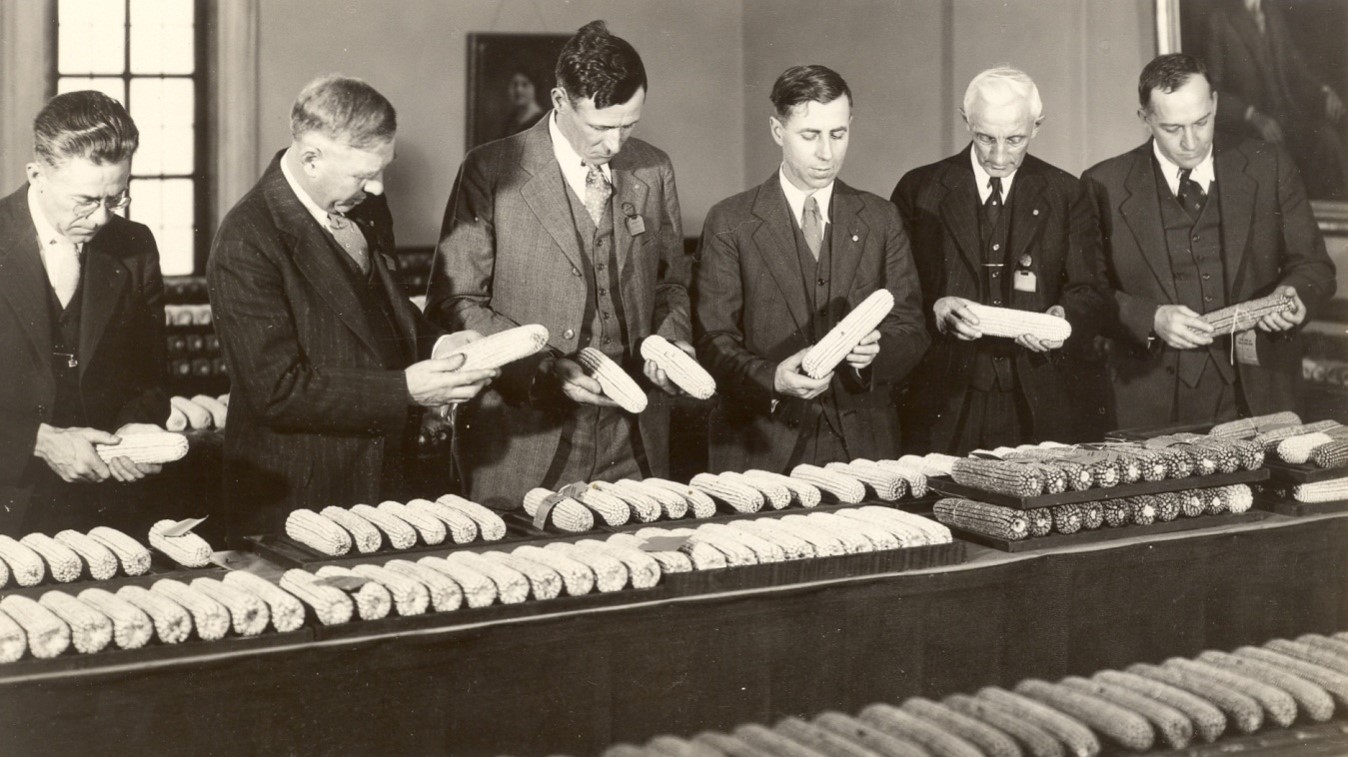
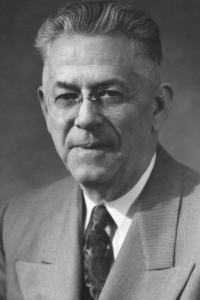
Fred E. Robbins
Robbins spent 41 years teaching freshman crop production and was a leader in the winter short course program.
Made Significant Educational Impact
Agronomy Legend Fred E. “Robbie” Robbins first entered education at the elementary level, then chose crop production at the university level after completing his own college studies.
He spent 41 years on staff at Purdue University, where he taught freshman crop production, an advanced course in commercial grain quality, and was a leader in the winter short course program.
He was especially interested in student involvement, founding Ceres, the agronomy honorary society; coaching the Purdue Inter-Collegiate Crop Judging Teams for several years; and directing orchestra, glee club and sports programs for students. He also worked with area 4-H clubs.
Robbins sponsored crop judging schools and developed a training program for grain elevator operators. He the first licensed soybean inspector in the State of Indiana, and the 12th in the U.S.
He held memberships in the American Society of Agronomy and National Association of Chief Grain Inspectors.
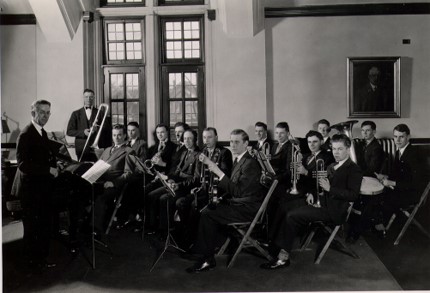
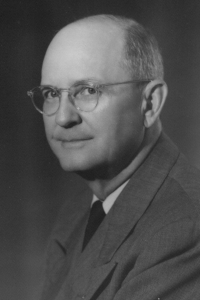
Keller E. Beeson
Beeson is best known for teaching through a variety of mediums with lessons that focused on crop production. He also helped found the American Soybean Association.
Marched to the Beat of Agriculture’s Drum
As drum major for the Purdue marching band, Agronomy Legend Keller Beeson mastered leadership lessons as a student that would serve him well in a 40-year career devoted to agriculture.
Beeson first worked in sales, then seven years as a high school teacher and principal and two eradicating barberry. He joined the Purdue staff in 1924. He’s best known for teaching—through demonstrations, short courses, winter schools and published circulars—with lessons that focused on crop production.
He rode the Purdue Soil Testing Special, a train that traveled the state. He reviewed soil samples farmers brought to him for recommendations on lime, fertilizer and crop rotation. He also directed corn and soybean yield contests at state grain and seed shows.
Beeson was involved in the seed certification program from 1924 to 1962. He helped found the American Soybean Association. And he served as a 4-H club leader.
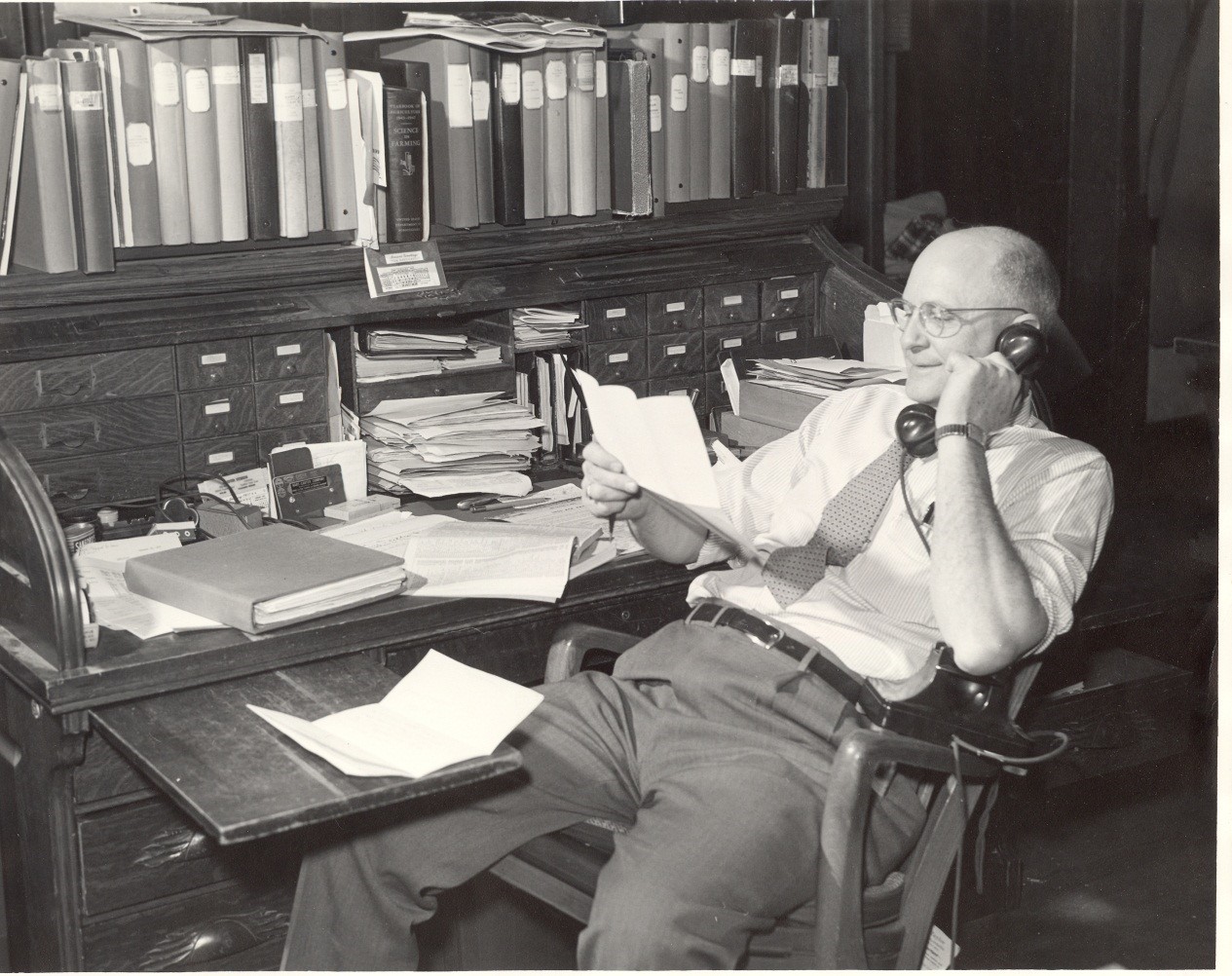
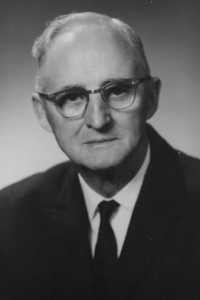
Mervill O. Pence
Pence was the first to demonstrate the Purdue Soil Test Kit on the farm in 1934. He was also involved with improving small grains, soybeans, sorghum, and sudan grass.
Rode the Rails for Agriculture
Raised on a Grant County, Indiana, farm, where he worked three years after high school to earn the money to attend Purdue, Agronomy Legend Melville “M.O.” Pence never strayed far from his agricultural roots.
In fact, he regularly returned to farms all around the state, riding the rails on the Purdue Soil Testing Special, dubbed the Extension Train. Analyzing soils brought to the train, he offered recommendations on lime, fertilizer and crop rotation. He oversaw the Five-acre Corn Club, which grew from 500 in 1925 to more than 4,000 members in 1956.
He was the first to demonstrate the Purdue Soil Test Kit on the farm in 1934. He also promoted alfalfa as a forage crop, introduced Korean lespedeza and Ladino clover and gave demonstrations on pasture improvement through fertilization and renovation. He also was involved in improving small grains, soybeans, sorghum and sudan grass, which led to dramatically increased yields.
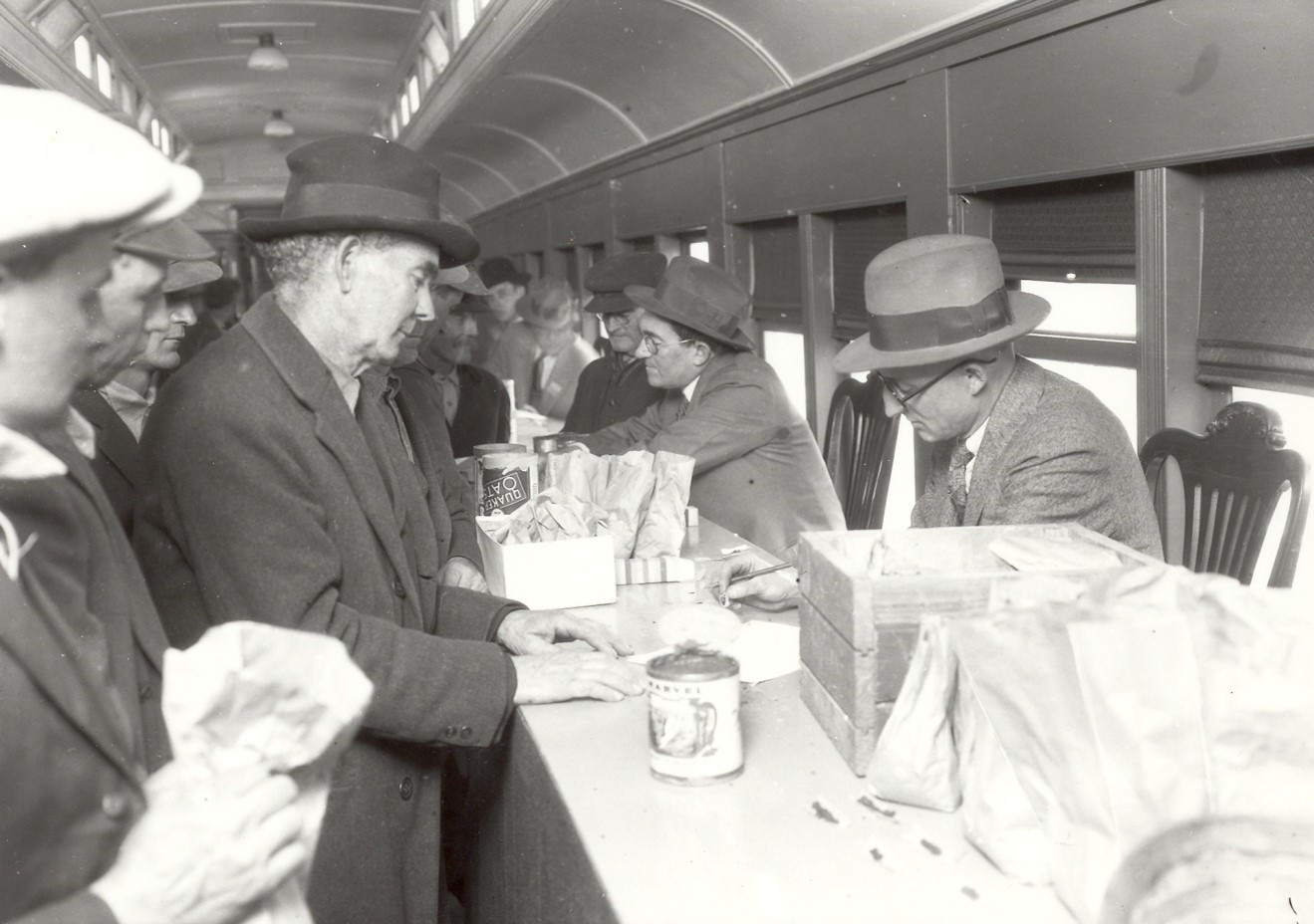
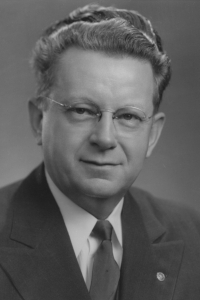
George D. Scarseth
Scarseth was known for his talents as a teacher, speaker, and writer, and was often invited to give guest presentations. He was also well recognized for his soil fertility studies.
Thought Outside the Box
While Agronomy Legend George D. “Doc” Scarseth spent only a few years at Purdue University, part as department head, his contributions were far-reaching. He promoted new ideas and approaches in crop production, and he personally guided about a dozen graduate students who went on to high achievements.
Scarseth was known for his talents as a teacher, speaker and writer, and was often invited to give guest presentations. He published widely, including two books: Man and His Earth in 1962 and Humans and Its Earth in 1964.
As a researcher, he was especially well recognized for his soil fertility studies, options for increasing yield and early no-till or minimal tilling practices. He also explored various regions of the world for crop production, not just those with seemingly ideal conditions. He continued his research long after leaving Purdue, working nearby at the American Association for the Advancement of Science.
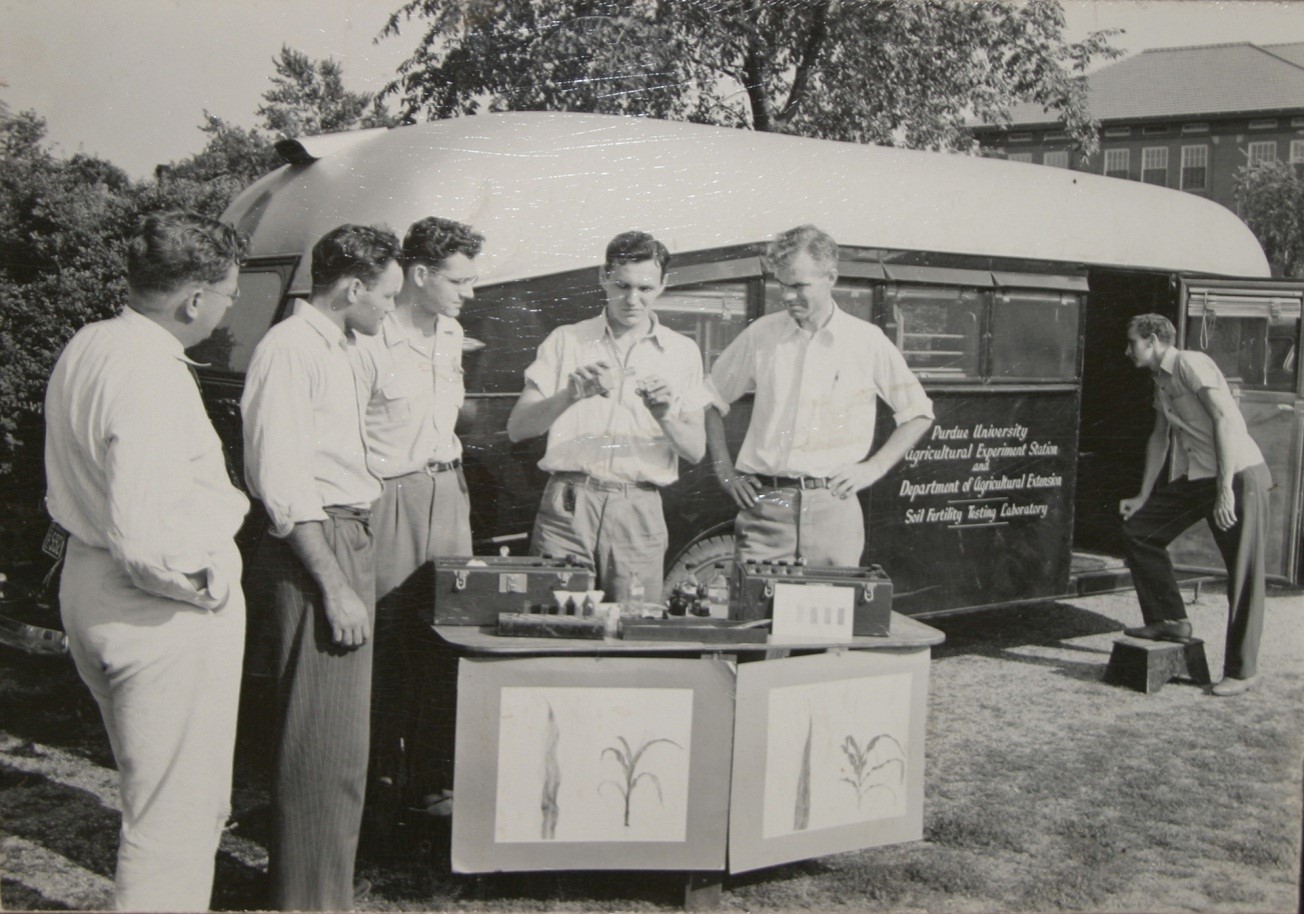
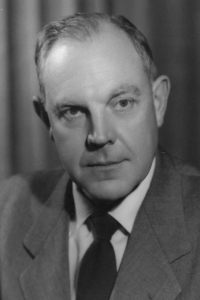
John B. Peterson
During his time at Purdue as Department Head of Agronomy, Peterson increased staff and enrollment three-fold over 20 years, identifying talented new staff and assembling a world-renowned faculty.
Led Agronomy’s Growth, Recognition
When Agronomy Legend John B. Peterson came to Purdue University as department head in 1948, he was already well-recognized for his achievements and contributions. That continued at Purdue, where he increased staff and enrollment three-fold over the next two decades.
Skilled in analyzing complex situations, Peterson was frequently called on to consult with developing countries, international agencies, foundations and governments. He also developed graduate education programs with the Rockefeller and Ford foundations for young scientists from Mexico, South America, Central America, Africa and Asia.
His own research was in soil chemistry, soil resource inventory, remote sensing and soil conservation. Her perceived and demonstrated that remote sensing would be useful in soil resource inventory, and he continued that work after retiring as department head, serving as deputy director of the Laboratory for Applications of Remote Sensing at Purdue.
His publications were many, and he frequently was invited to give presentations.

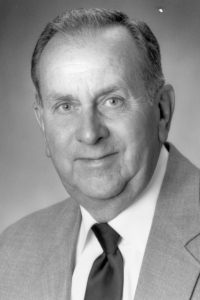
Oscar W. Luetkemeier
Ozzie served as superintendent of the Agronomy Farm where he oversaw breeders’ multiplication of numerous varieties of crops and acquired additional acreage for the farm under his tenure.
Field Research a Boon to Agriculture
Field performance is agriculture’s ultimate test, and that was the domain of Agronomy Legend Oscar “Ozzie” Luetkemeier, named superintendent of the new Agronomy Farm in 1949 when Purdue acquired the Mable Avenue Stock Farm.
Initial work to transform the 374 acres into an internationally recognized research station included designing field and drainage layouts, placing field markers, constructing roads and buildings, finding and developing water sources and establishing operating procedures.
In his 37 years, Luetkemeier oversaw breeders’ multiplication of some 90 varieties of soybeans, wheat, oats, barley and crambe. He also conducted other research, published widely and welcomed as many as 50 U.S. and 15 international groups for tours every year. The farm size grew under his tenure, with additional acreage acquisitions.
Luetkemeier also served on the Agricultural Alumni Association, Indiana Crop Improvement Association and Indiana Forage Council boards, and he organized U.S. field research station superintendents in the American Society of Agronomy.
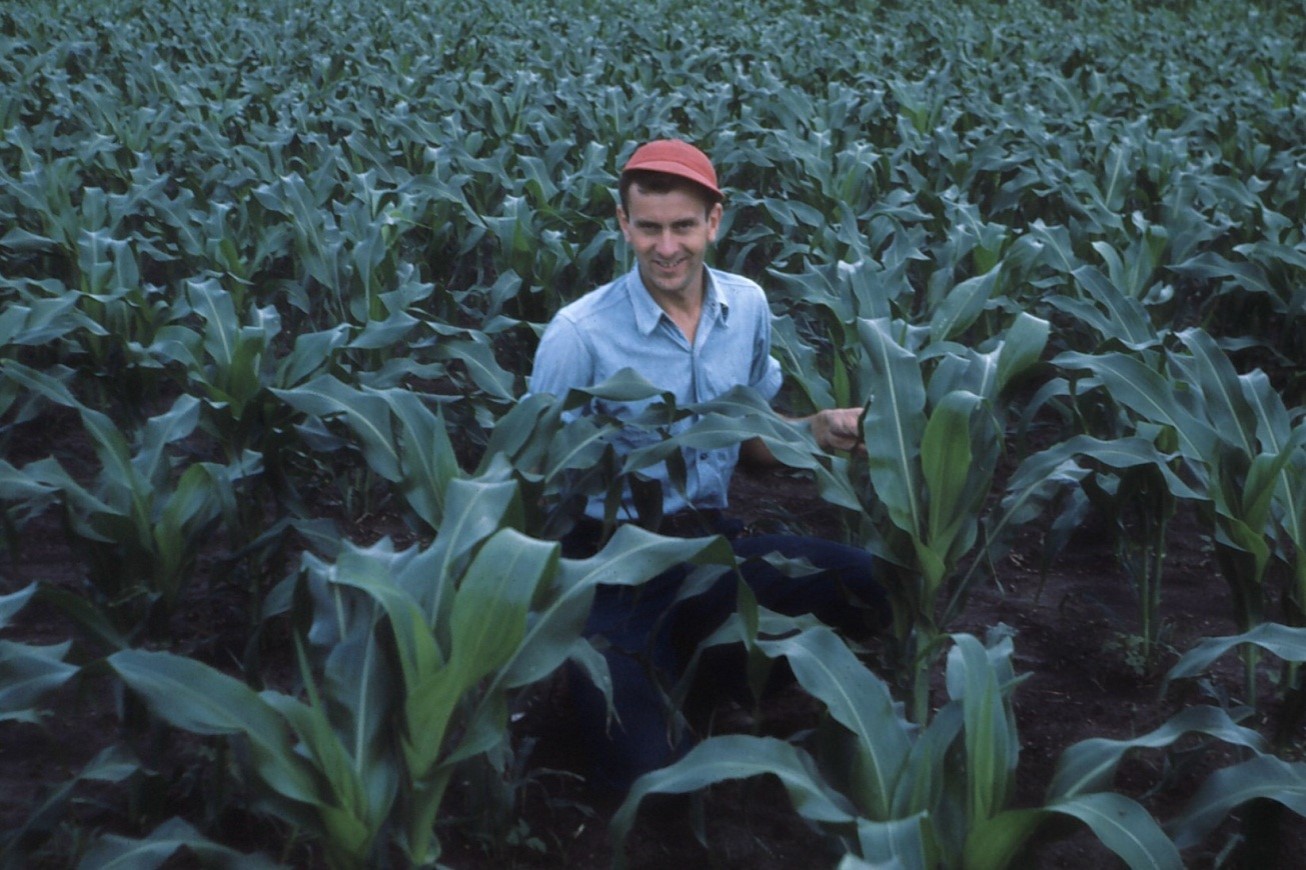
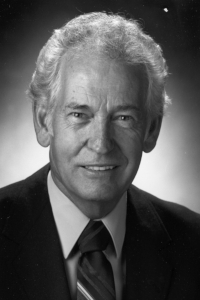
William H. Daniel
Daniel spent 35 years at Purdue where he developed improved turfgrasses for golf courses, athletic fields, lawns, and sod. He was also a leader in founding the International Turfgrass Society and the Midwest Regional Turf Foundation.
Recognized Internationally for Turf Work
Serving as a consultant to companies in Japan, Europe and Saudi Arabia, Agronomy Legend William “Bill” Daniel took his Purdue work around the world, often providing solutions to turf problems in commercial, industrial and recreational areas. Stateside, his advances in turfgrass and turf management took root at Mile High Stadium in Denver, Soldier Field in Chicago and countless other spots.
In his 35 years at Purdue, Daniel developed improved turfgrasses for golf courses, athletic fields, lawns and sod. Varieties included Evansville bentgrass, Midwest zoysia, Sodco bluegrasses and Wabash. He also developed the PURR-Wick Water Management System, combining irrigation and drainage, and the Prescription Athletic Turf system, involving suction pumps and automatic soil moisture controls.
Daniel was a leader in founding the International Turfgrass Society, helped organize the Sports Turf Managers Association and was senior editor of the Turf Managers’ Handbook.

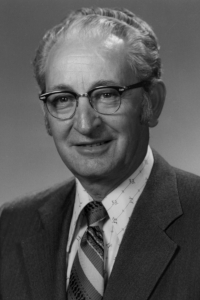
Fred L. Patterson
Patterson developed in his 36 years as a faculty member, more than 50 small grain varieties, served as a major professor for 46 graduate students, and added more than 200 publications on genetics and plant breeding to agronomy’s research literature.
Developed Dozens of Grain Varieties
It takes at least double digits to tally every achievement of Agronomy Legend Fred Patterson, an internationally recognized plant breeder in small grains.
In his 36 years at Purdue University, he developed more than 50 small grain varieties, served as major professor for 46 graduate students and added more than 200 publications on genetics and plant breeding to agronomy’s research literature. He also was known for his early applications of new genetics discoveries to crop improvements.
His research included wheat, oats, barley, rice, sorghum, corn and alfalfa. He attained significant advancements in genetics, plant breeding, pathology and cultural practices, and oversaw development and release of 27 new wheat varieties, five types of barley and 20 oat lines, accounting for hundreds of millions of acres of crops.
Patterson taught dual level and graduate plant breeding courses, earning great respect as a teacher. He also was appreciated for his humorous quips and ready tales, many with a lesson.
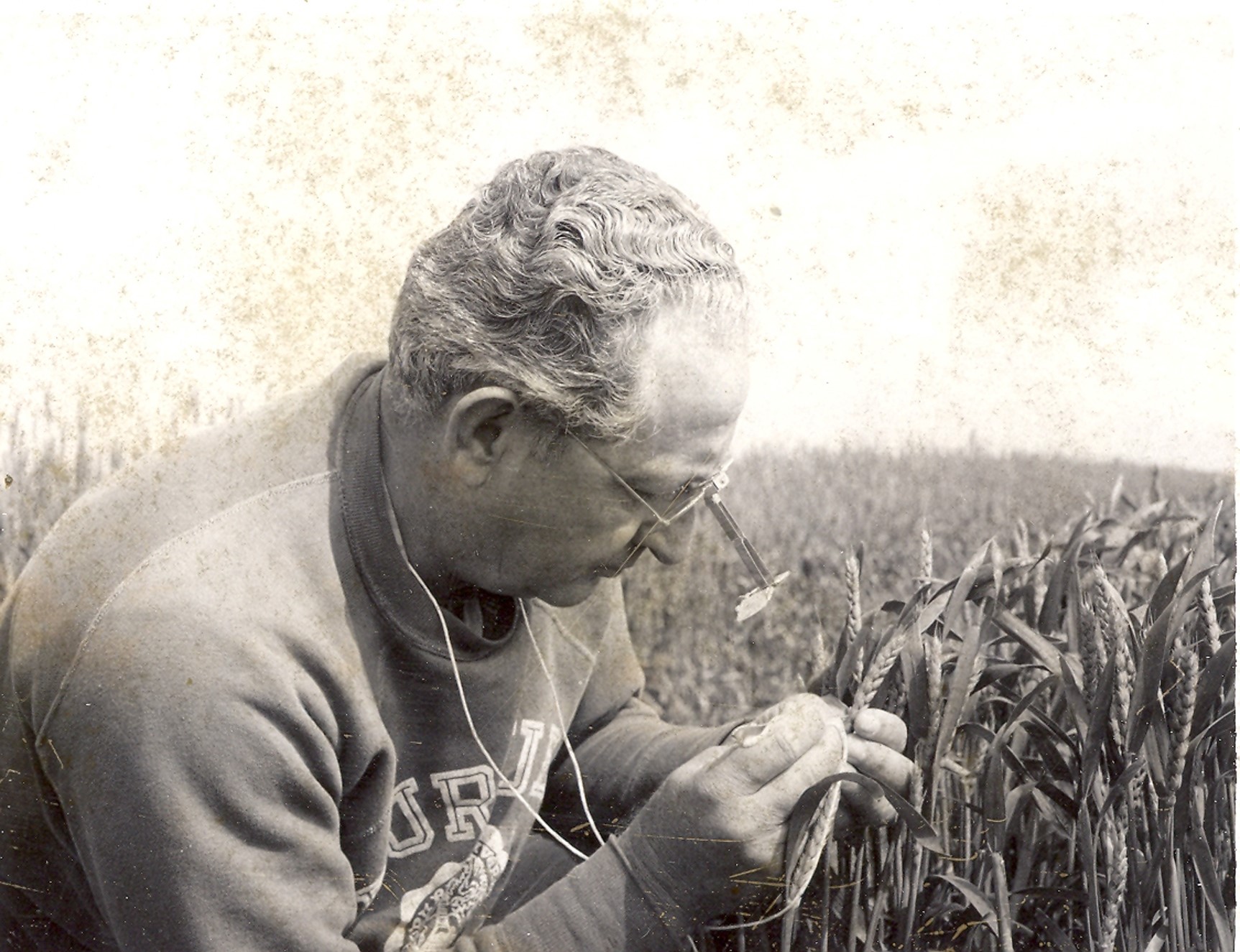
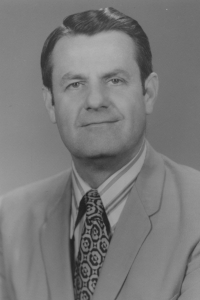
Wayne F. Keim
Keim is known for being a tremendous teacher and recruiting young people to the field, often visiting Indiana high schools while a professor at Purdue, and was named Best Teacher by the School of Agriculture twice.
Shed New Light on Crop Genetics
In 45 years of teaching, research and administration at Cornell, Iowa State, Purdue and Colorado State universities, Agronomy Legend Wayne F. Keim, now retired, made significant contributions as a teacher and researcher.
His coursework centered on genetics. His research included genetics, breeding, physiology, cytology and seed production in perennial forage legumes.
He particularly enjoyed recruiting young people to the field, often visiting Indiana high schools while a professor at Purdue, where he twice was named Best Teacher. His genetics labs were popular and effective because of the hands-on experiences offered, and his lectures often spiced with humor.
Keim published widely, served as president of the Crop Science Society of America and received the Agronomic Education Award from the American Society of Agronomy, among other honors. He was also active in the Genetics Society of America, Botanical Society of America and American Genetics Association.
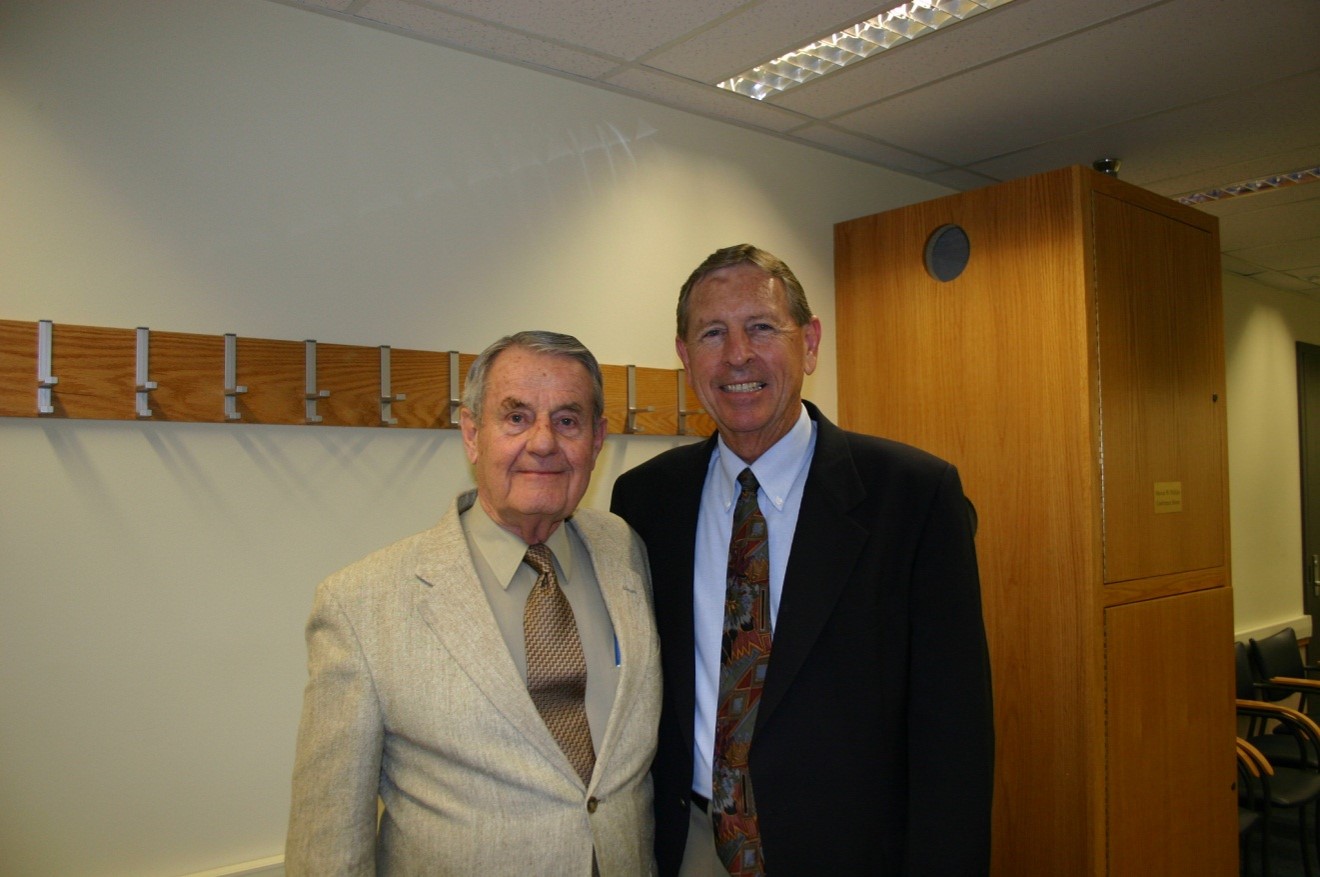
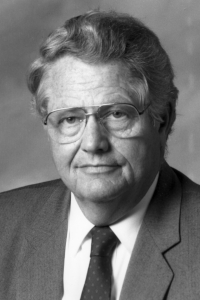
John D. Axtell
Axtell spent more than 3 decades on the Purdue campus teaching advanced genetics and interdisciplinary genetics seminar, and guided numerous graduate students who went on to key leadership posts worldwide.
Nutrition Contributions Reached Around the World
Interdisciplinary research, scientific leadership in plant breeding and genetics, and agricultural development work of international scope define the varied and vast contributions of Agronomy Legend John D. Axtell.
His most significant achievement was discovering and identifying the factors responsible for grain sorghum’s reduced protein availability and digestibility. Under his leadership, a team of biochemists, nutritionists and geneticists found that tannins negatively impact protein availability and, therefore, sorghum’s nutritional quality.
Increasing the amino acid lysine in sorghum, they found, would improve the diets of people worldwide who rely on the cane-like plant as a staple. He developed new hybrids, pioneered research on an in vitro pepsin digestibility method and contributed to germplasm development.
Spending more than three decades on the Purdue campus, Axtell taught advanced genetics and an interdisciplinary genetics seminar. His influence lives on through the numerous graduate students he guided who went on to key leadership posts around the world.

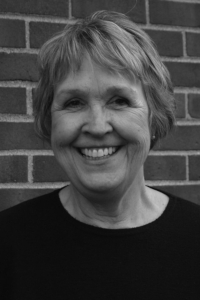
Sandra S. Spitznagle
Spitznagle has been the administrative assistant for 5 of the 11 Agronomy department heads. She has been instrumental in each of their successes in addition to being a great support for each and every faculty and staff member that has worked in Agronomy in her tenure.
Covers All the Bases
Many hats and multiple tasks come into play every day for Agronomy Legend Sandra Spitznagle, who has been on the job for 40 of the department’s 100 years, working for four different department heads.
Today’s responsibilities include overseeing and coordinating the 11-member clerical staff and assisting the department head in administrative management, public relations and alumni functions.
A can-do spirit, welcoming style and excellent communication skills aid her in her exemplary contributions. Her breadth of service has earned her unofficial titles of comforter, advocate, organizer, events coordinator, friend, mediator, facilitator, historian, designer and educator.
Spitznagle’s service includes membership in and past chair of the Purdue Clerical and Service Staff Advisory Committee and United Way Advisory Committee. She’s also served on numerous department committees, including leadership posts as Alumni Newsletter Committee chair and coordinator of the Agronomy Harvest Reunion from 1999 to 2003.

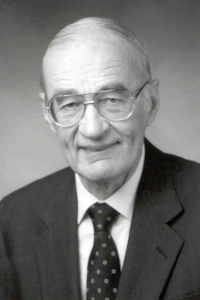
Stanley A. Barber
Dr. Barber spent his entire professional career at Purdue University where he focused his research on soil nutrient uptake by plant roots using plant physiology, chemistry and physics, mathematics, and computer science. Dr. Barber was a fellow of the Indiana Academy of Science and the American Society of Agronomy and has served on the boards of ASA, SSSA, and ISSS. He received the Honorary Member Award from National Fertilizer Solutions Association in 1978.
Stanley A Barber, West Lafayette, a professor of agronomy at Purdue, was honored for his extensive research into soil fertility. A native of Wolseley, Saskatchewan, Canada, he earned B.S. and M.S. degrees at the University of Saskatchewan and a Ph.D. degree at the University of Missouri. He joined the Purdue faculty in 1949. He applied basic principles of chemistry, physics and biology to the study of plant-soil relationships. His research work has established him as an expert in soil fertility, plant nutrition and computer simulation models of how plants use nutrients. Well-known as an educator, Barber has supervised 55 graduate students and 21 postdoctoral scholars. He has published over 170 research publications and a book, “Soil Nutrient Bioavailability: A Mechanistic Approach.”

Made Strides in Research through Innovation
From a one room schoolhouse in Canada to the number one agriculture school in the United States, legend Stanley A. “Stan” Barber made tremendous strides in his career. A respectful man who focused on research, he used innovative, new approaches to studying nutrient uptake in plants which led to groundbreaking new developments in the field of agronomy.
Before Barber’s research, statistics, and nutrient solutions were used in plant nutrition research. Equations were not enough for him, though, so he created a mechanistic model instead. The results of this model made him the first scientist to describe the entire nutrient pathway from soil solids to the plant root. Another noted accomplishment his research that confirmed Bray’s Nutrient Mobility Theory.
His new ideas about research drew many students to the Agronomy Department’s graduate and post-doctoral programs. Barber advised 55 graduate students and 27 post-doctoral students while at Purdue, many of them from other countries. He was also one of the most prolific writers in the Department of Agronomy at Purdue. With the help of his many Purdue graduate students his work was published over 200 times.
His outstanding research accomplishments were recognized when he received the McCoy Award, Purdue’s highest award in research, the von Humbolt Awards, and in 1987 was inducted into the National Academy of Science. He always recognized his research team as an integral part of his accomplishments.

Thomas Bushnell
Professor Bushnell worked on Land Classification in Region III for the Resettlement Administration and was an agricultural specialist in a Cornell University air photo interpretation team and for the Land and Agricultural Planning Commission in Burma. He was also in charge of the Indiana Soil Survey after 1921 and used aerial photographs as a base for soil survey. Professor Bushnell developed micro monoliths for sampling soils so field evidence could be easily preserved and stored.
Photographed His Way into Soils History
Legend Thomas M. “Tom” Bushnell was known for accuracy and efficiency, and the legacy of his accomplishments reflects that commitment. When he joined the Aviation Section of the U.S. Army Signal Corps during World War I, he stumbled across a new and, true to form, more efficient way to survey soils: aerial photography.
Upon joining the Purdue Agronomy faculty in 1921, Bushnell led the Indiana Soil Survey. He began using aerial photos of a specific area as the basis for soil survey before eventually mapping the entirety of Jennings County using aerial photos in 1929. This was the first time that an entire county’s soil had been mapped through aerial photography.
Along with his aerial photography contributions, he also analyzed soil colors through the use of Maxwell color discs which led to the development of current standards based on the Munsell color system. Always eager to make learning about soils more efficient, Bushnell made a micro monolith kit available to easily preserve and store soil samples from the field. His book “A Story of Indiana Soils” from 1944 detailed properties of soil types across the state.
Not only did Bushnell share his innovations and contributions with the academic community, but he also wanted to provide the public with a clearer picture of what soil survey was all about. Indiana fairgoers can thank him for the electronic soils boards that he developed that flashed a light for correct answers to soils questions. Internationally, he traveled to Japan, Burma, and the Dominican Republic to advise and practice soil survey. His dedication and invaluable contributions to soil survey laid a strong foundation for soil scientists to follow.

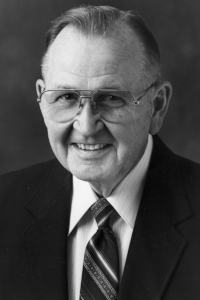
A.R. "Rudy" Hilst
Dr. Hilst was respected for his teaching and research abilities. He performed research on the morphological development of cereals in relationship to herbicides, leading to 15 scientific articles, publications, and talks at professional society meetings based on his findings. He was appointed Associate Dean and Director of Resident Instruction in the School of Agriculture at Purdue University where he was referred to by the students as “the Friendly Dean.”
Dr. A. R. (Rudy) Hilst has devoted his career to the well-being of the agricultural people of Indiana. Starting as an instructor in the Agronomy Department in 1949, he has had a remarkable influence on the agricultural students of Purdue University. He has taught and counseled hundreds of students and, in so doing, has won their confidence and respect. Truly, he has excelled among excellent teachers.
He won the Outstanding Teacher Award of the School of Agriculture and the Purdue University Outstanding Teacher Award sponsored by Standard Oil of Indiana. The American Society of Agronomy presented him with the Agronomic Education Award in 1961. As associate dean, Hilst has been energetic in promoting better teaching and counseling. Under his guidance 10 new options have been added to the School of Agriculture. He has developed a teaching methods program for new assistant professors and a method to evaluate the teaching load of a staff member which has proven successful.
In spite of his work load he interacts regularly with students in his home, in club activities and seminars. He is a willing participant in Agricultural Alumni meetings. His eminence in the field of education has been recognized by his appointment to several national committees on educational policy.

Committed to Student Success
Agronomy Legend A.R. “Rudy” Hilst wore many hats during his time at Purdue University. Over the course of his 40 year Purdue career, he served as professor, advisor, researcher, and associate dean, but no matter what his role or title, he approached it with a friendliness, optimism, and enthusiasm.
Respected for his abilities in teaching and research, Hilst’s main interest was in crop production and physiology. His talent was in the classroom, where he taught and encouraged freshmen students. It was under his influence that many decided to pursue degrees in Agronomy. In addition to his duties as a professor, Hilst served as faculty advisor to a number of student organizations at Purdue including the Agronomy Club, the Ag Student Intercom, and the Student Agricultural Council.
Hilst’s research and academic talents were impressive, resulting in 15 scientific articles and publications. He received many awards, including the Certificate of Distinction from the Purdue Agricultural Alumni Association, the Purdue Debris Favorite Teacher Award, and the Outstanding Educators of America Award, which he was twice awarded.
His leadership abilities led him to be appointed Associate Dean and Director of Resident Instruction in the School of Agriculture in 1969. His accomplishments in this position were numerous, including adding 24 baccalaureate degree majors, launching two associate degree curricula, expanding programs with Purdue regional campuses, initiating a cooperative education program with industry, and fostering a new teaching method for newly appointed professors and teaching assistants. Even as Associate Dean, Hilst never stopped interacting with students, making it known that his door was always open to them.
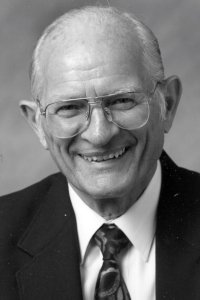
Charles L. Rhykerd
Dr. Rhykerd has been recognized for his excellence and accomplishment in both teaching and research and was awarded the NACTA Ensminger-Interstate Distinguished Teacher Award. He was committed to agricultural development internationally and taught many graduate students from Africa, Europe, Latin America, and New Zealand. Dr. Rhykerd used a team approach to forage-animal problem solving and cooperated with various other departments to accomplish research goals.
Hitting the Mark in Agriculture
The trap and skeet range wasn’t the only place that Agronomy Legend Charles L. “Chuck” Rhykerd made an impact. Over a period of 30 years, the first advisor and coach for the Purdue Trap and Skeet Club also served as counselor to 20-30 students a year and professor to many more.
Two years after receiving his Ph.D. from Purdue, he returned as a professor teaching forage production and utilization. He started a co-operative education program between Purdue and the agriculture industry that allowed many undergraduates their first experience in the “real” business of agriculture. His interdisciplinary work with other departments was well known and his success in this area was a unique accomplishment.
Rhykerd boasted a host of international achievements, including teaching and research and consulting with ministries of agriculture and private organizations on 4 continents. He also advised many international students at Purdue.
His greatest achievement, however, was in the lives and education of the many students he taught and advised. He is remembered by students for the care and patience he showed while advising. His skills did not go unrecognized when he was awarded the NACTA Distinguished Teacher Award, and received awards from Omicron Delta Kappa for outstanding academic advising and non-academic counseling.
